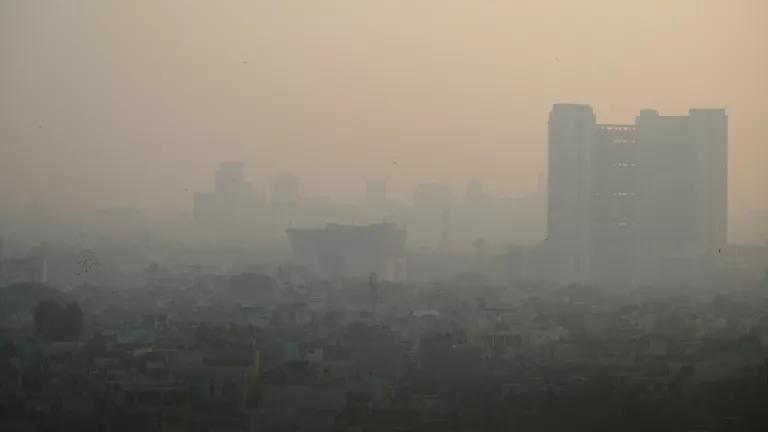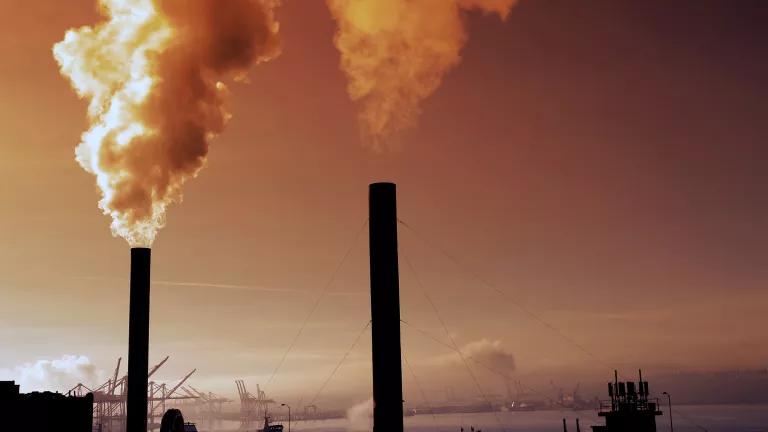The Supreme Court Ends Chevron Deference—What Now? (original) (raw)

The U.S. Supreme Court in Washington, D.C.
Credit:
Sarah Baker
The U.S. Supreme Court’s ruling today in Loper Bright Enterprises v. Raimondo dealt a severe blow to the ability of federal agencies to do their jobs by ending the 40-year-old precedent of “Chevron deference.” Instead of deferring to the expertise of agencies on how to interpret ambiguous language in laws pertaining to their work, federal judges now have the power to decide what a law means for themselves. As a result, despite not being accountable to the people, judges will now be able to expand their role into the realm of policymaking.
“In one fell swoop, the majority today gives itself exclusive power over every open issue—no matter how expertise-driven or policy-laden—involving the meaning of regulatory law,” wrote Justice Elena Kagan in her dissent from the ruling. “As if it did not have enough on its plate, the majority turns itself into the country’s administrative czar.”
The decision has profound consequences, not only for the country’s rule of law but also for how agencies—such as those protecting the public against everything from pollution and contaminated food to workplace hazards and rising drug prices—are able to function. Here’s what you need to know.
The balance of power
We're taught in school about how the U.S. government’s separation of powers is supposed to work: Congress writes the laws, the executive branch carries them out, and the judiciary—including the Supreme Court—resolves arguments about what these laws mean and evaluates whether they're being enforced properly. In reality, these powers overlap at times between the branches of government, and overall, the system relies on a certain degree of trust.
For instance, as society, technology, and the economy have grown more complex, so, too, has the task of governance. Because Congress is not equipped to micromanage the day-to-day administration of the legislation that it passes, it must rely on federal agencies—under the supervision of the president—to carry out laws and policies according to their best good-faith interpretations. Likewise, federal judges have a role in determining the meaning of Congress’s laws in order to settle disputes. But the act of policymaking has always belonged to the two elected branches.
Today, however, the Supreme Court seized for both itself and lower-court judges a policymaking role that the Constitution did not intend for them to have. The court stripped many federal agencies tasked with protecting public health, public safety, and the environment—including the U.S. Environmental Protection Agency (EPA) and the U.S. Food & Drug Administration, to name just two—of their power to interpret the laws they carry out. Instead, federal judges now get to call the shots.
What is “Chevron deference,” and how does it work?
Chevron deference is the latitude federal judges give agencies over how to interpret the statutes they administer when a dispute arises. Some 40 years ago, the Supreme Court articulated a relatively simple two-part test. First, the judges examine the wording and the context of the statute in question to see if Congress’s intent is clear. If it is, then the matter is settled: The agency is obliged to follow the letter of the law.
“What it comes down to is this: If Congress has left an agency with a policy choice, the agency should get to make it, not the courts.”
David Doniger, Senior Federal Strategist for NRDC's Climate & Energy Program
But if the statutory language is ambiguous—that is, if it has two or more reasonable interpretations—the reviewing court must defer to the agency’s choice in how to carry out the law. The idea behind such deference is that expert agencies, accountable to an elected president, are better suited than federal judges to make the policy choices that Congress left open.
Established in 1984 by the Supreme Court’s ruling in Chevron U.S.A. v. Natural Resources Defense Council, this jurisprudential doctrine has underpinned U.S. administrative law ever since and has governed some of our most important protections involving pollution, food safety, and more. David Doniger argued the Chevron case on behalf of NRDC, which at the time was trying to get the EPA to adequately enforce pollution controls at industrial facilities under the Clean Air Act. The agency under then president Ronald Reagan was more inclined toward pursuing industry-friendly deregulation than decreasing pollution. Citing statutory ambiguity, Reagan’s EPA proffered its interpretation of the Clean Air Act’s directive—an interpretation that was, unsurprisingly, much more to the liking of polluters and industrial facility owners (like Chevron). The court ultimately ruled in favor of the agency, and the precedent of Chevron deference was born.
Today, Doniger, who currently serves as senior federal strategist for NRDC’s Climate & Energy program, distills the court’s reasoning in the 1984 case. “What it comes down to is this: If Congress has left an agency with a policy choice, the agency should get to make it, not the courts,” he says.
The case that overruled Chevron deference
Loper Bright Enterprises v. Raimondo pitted the owners of a New England fishing company against a federal agency, the National Marine Fisheries Service (NMFS). The Magnuson-Stevens Act sets catch limits to help prevent overfishing and requires fishing boats to have a government-appointed inspector onboard to monitor compliance.
Fishing companies incur the cost of these monitors—in plaintiff Loper Bright’s case, about $700 a day—but the company argued that NMFS had no authority to force it to do so. A district court disagreed, reasoning that Congress left that question open for the agency to decide. Applying Chevron_,_ the court deferred to NMFS’s choice that the boat owner should pay. A federal appeals court affirmed this decision.
The plaintiffs then appealed to the Supreme Court, which in May 2023 announced that it would take up the case.
A recipe for chaos
At the time of the 1984 Chevron v. NRDC ruling, Doniger notes, it was widely perceived in legal and political circles that judges in the lower federal courts were inappropriately crafting policy by deciding for themselves what certain laws meant, effectively substituting their own ideas for the discernment of agency experts. “So the Supreme Court was basically saying to the lower courts: Stop inserting your own policy preferences under the guise of interpreting the law,” Doniger says.
That order, in and of itself, is apolitical, because the Chevron sword cuts both ways. In administrations that are seeking to relax protections (such as Reagan’s EPA in the Chevron case itself), agency heads won’t like having their decisions overruled by judges with a different way of seeing things. For presidential administrations that prioritize climate action, curbing pollution, and promoting environmental justice, Chevron deference has helped allow environmental progress. John Walke, a senior advocate in NRDC’s Environmental Health program, has argued many cases in federal court where Chevron deference has come into play, and he thinks combatants on both sides of the political divide should bemoan its erasure. Walke says, “Regulatory agencies can be harmed, but deregulatory agencies can be harmed as well.”
Chevron deference’s detractors argue that the doctrine gives agencies a rubber stamp to impose onerous restrictions and rules. But as noted by the Brennan Center for Justice, a nonpartisan law and policy institute, federal agencies face legal challenges to their rules all the time—and only prevail in about 70 percent of these challenges, even with the Chevron doctrine on their side. In other words, their powers are far from unchecked.
Both Doniger and Walke think that ending Chevron deference could potentially usher in a new era marked by legal and administrative chaos. For instance, in Chevron v. NRDC, the Supreme Court admonished the lower courts to not usurp agency prerogatives by making public policy through their rulings. Now the Supreme Court has reopened the door for federal judges to decide how executive-branch agencies should go about their daily business whenever Congress has used ambiguous language, which, it should be noted, isn’t always unintentional. Sometimes Congress is purposefully inexplicit in order to give the subject-area experts space to decide how best to implement a regulation. For example, an agency made up of occupational safety specialists should already be well equipped to decide how to handle the technical, nuts-and-bolts aspects of imposing workplace protections—rules about equipment usage, say, or the need for periodic employee rest breaks—without the meddling of judges. And given the complexity of weather patterns, EPA scientists are better equipped than judges at determining how much a state should curb its air pollution in order to protect people living in other states downwind.
An even more obvious problem with giving judges this unrestrained interpretive authority? The federal court system is huge—and the roughly 850 judges who sit on the lower courts are a philosophically and ideologically diverse bunch, to say the least. And as the judicial appointments process has become increasingly partisan, the range of these judges’ views has gotten even wider. Ending Chevron deference is tantamount to throwing a dart at a lower-court dartboard…and hoping for the best. “[There are] more than 10 different circuits, each with multiple judges,” Walke says. “Each with the ability to decide which reasonable interpretation is their preferred reasonable interpretation.”
That’s probably not the result that those who called for an end to Chevron deference had in mind. But it’s what we’re all dealing with now. And when a judge’s ruling gets it wrong, Congress will have to try to make it right by passing a new law—cue, the sands of time.
This NRDC.org story is available for online republication by news media outlets or nonprofits under these conditions: The writer(s) must be credited with a byline; you must note prominently that the story was originally published by NRDC.org and link to the original; the story cannot be edited (beyond simple things such as grammar); you can’t resell the story in any form or grant republishing rights to other outlets; you can’t republish our material wholesale or automatically—you need to select stories individually; you can’t republish the photos or graphics on our site without specific permission; you should drop us a note to let us know when you’ve used one of our stories.
Related Stories

February 8, 2024 ExplainerNew Delhi, California, India, United States
Why particulate matter…matters.

Air Pollution: Everything You Need to Know
October 31, 2023 GuideUnited States, InternationalJillian Mackenzie, Jeff Turrentine
How smog, soot, greenhouse gases, and other top air pollutants are affecting the planet—and your health.